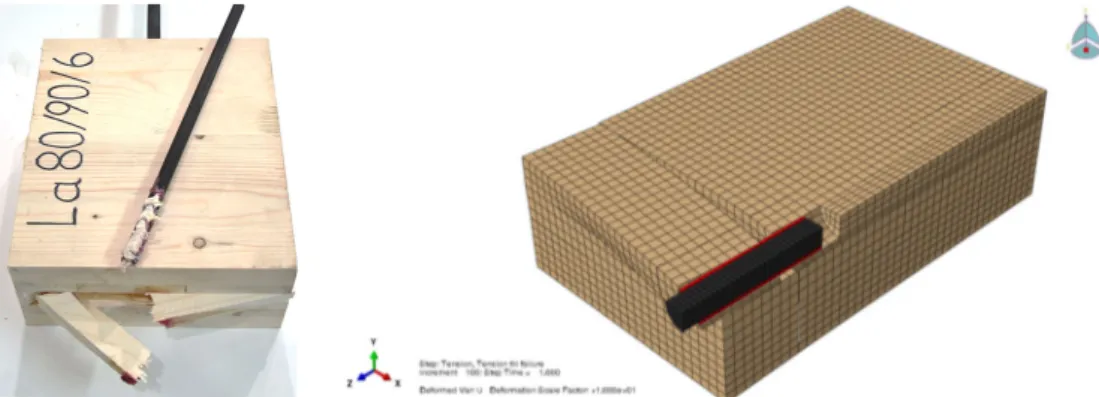30
ISBN: 978-91-88898-64-7
Modelling principles of glued-in rods in cross laminated timber
Boris Azinović†*, Henrik Danielsson‡, Erik Serrano‡, and Miha Kramar† † Slovenian National Building and Civil Engineering Institute, ZAG Ljubljana, Slovenia,boris.azinovic@zag.si, miha.kramar@zag.si
‡Division of Structural Mechanics, Lund University, Sweden,
henrik.danielsson@construction.lth.se, erik.serrano@construciton.lth.se
An experimental study of glued-in rods in cross laminated timber (CLT) was recently presented by some of the authors [1]. As a continuation, the experimental results are used for calibrating numerical models to study the effect of different parameters on the global load-bearing capacity and stiffness of glued-in rods in CLT. The numerical simulations are based on 3D finite element (FE) analysis using a cohesive zone modelling approach for the bond-lines between the timber laminations and the bond-line along the rod, to be able to capture the many different failure modes found in the experiments (Fig. 1). The numerical parameter studies concern influence of glued-in length, rod diameter and the direction of the rod axis with respect to the grain direction of the lamination within which the rod is glued.
Figure 1: Comparison of experimental (left) and numerical (right) pull-out failure for the connection with the rod perpendicular to the grain and bonded-in length 80 mm.
In this contribution, the principles of the numerical modelling are presented in detail with focus on the calibration of the parameters for the cohesive zone model and on the comparison of experimental and numerical results (Figure 2).
Figure 2: Load vs. displacement response of the numerical models (coloured curves) and the experimental tests (grayscale curves). Furthermore, the results are compared to empirical and semi-empirical design equations for estimating the pull-out strength of glued-in rods in structural timber and glulam. The comparison shows that most of the existing equations overestimate the ultimate tension loads for connections with the rod placed parallel to the grain of the core CLT layer and underestimate the ultimate tension loads for connections with the rod placed perpendicular to the grain.
Glued-in rod connections have high potential for use in CLT structures, which was confirmed also within this study. The numerical results show that the load-bearing capacity generally increases with the glued-in length and with the rod diameter, which agrees well with the experiments. The numerical results further show partly different mechanical behaviour for different rod-to-grain angles, especially regarding modes of failure. Further research is however needed for holistic evaluation of load-bearing capacity and stiffness of glued-in rod connections in CLT.
References
[1] B. Azinović, E. Serrano, M. Kramar, and T. Pazlar: Experimental investigation of the axial strength of glued-in rods in cross laminated timber, Materials and Structures, 51 (2018).
